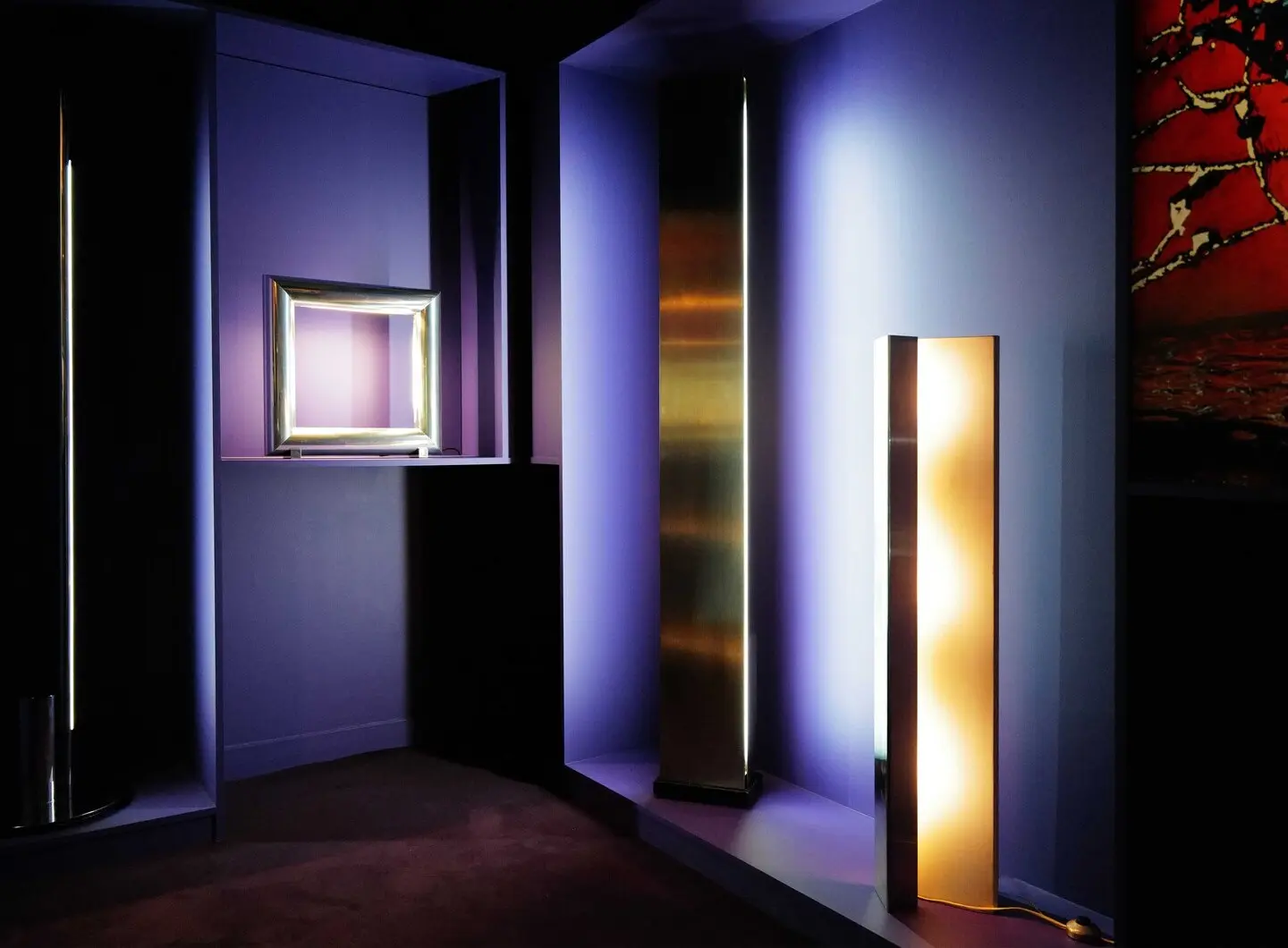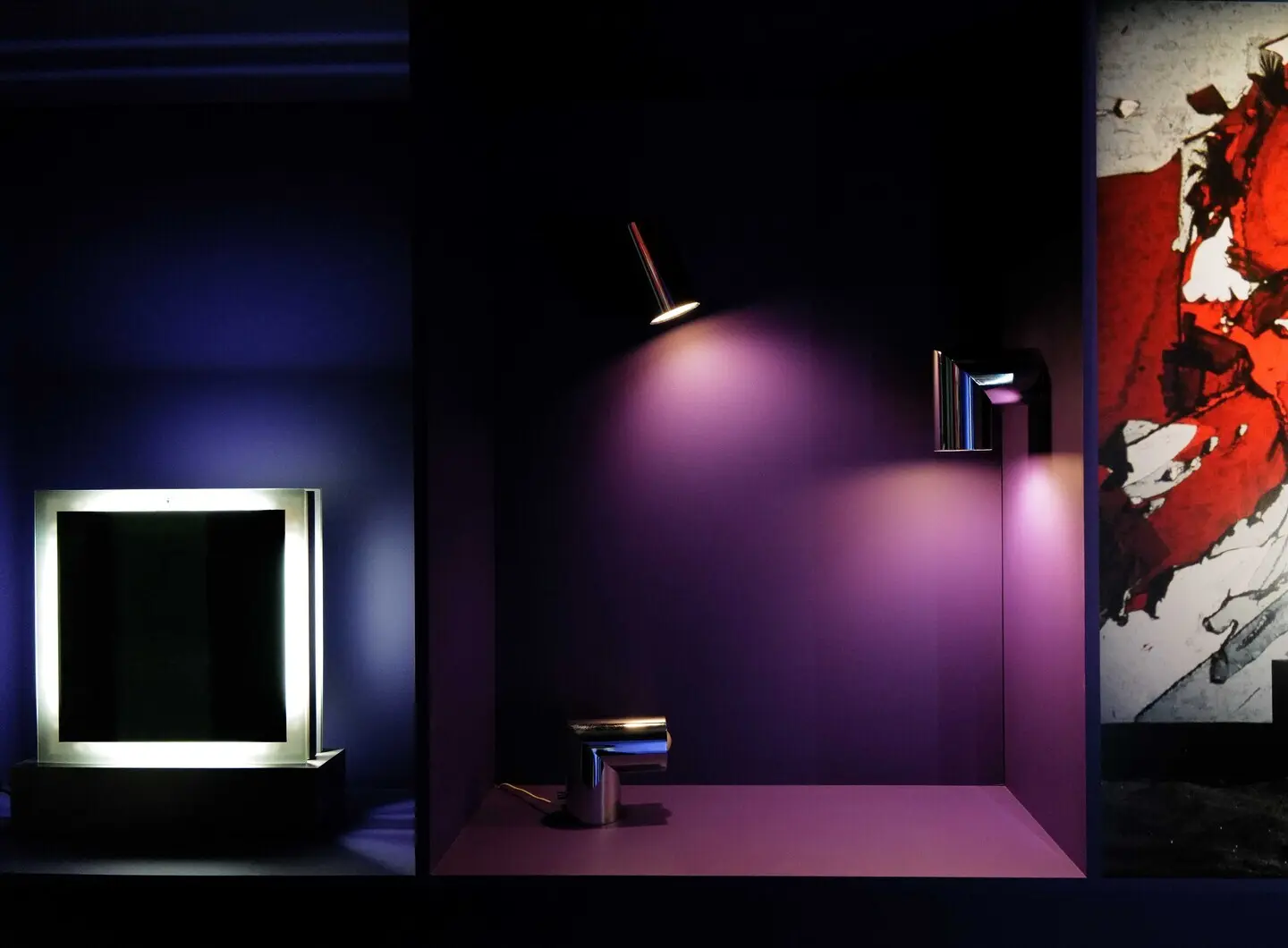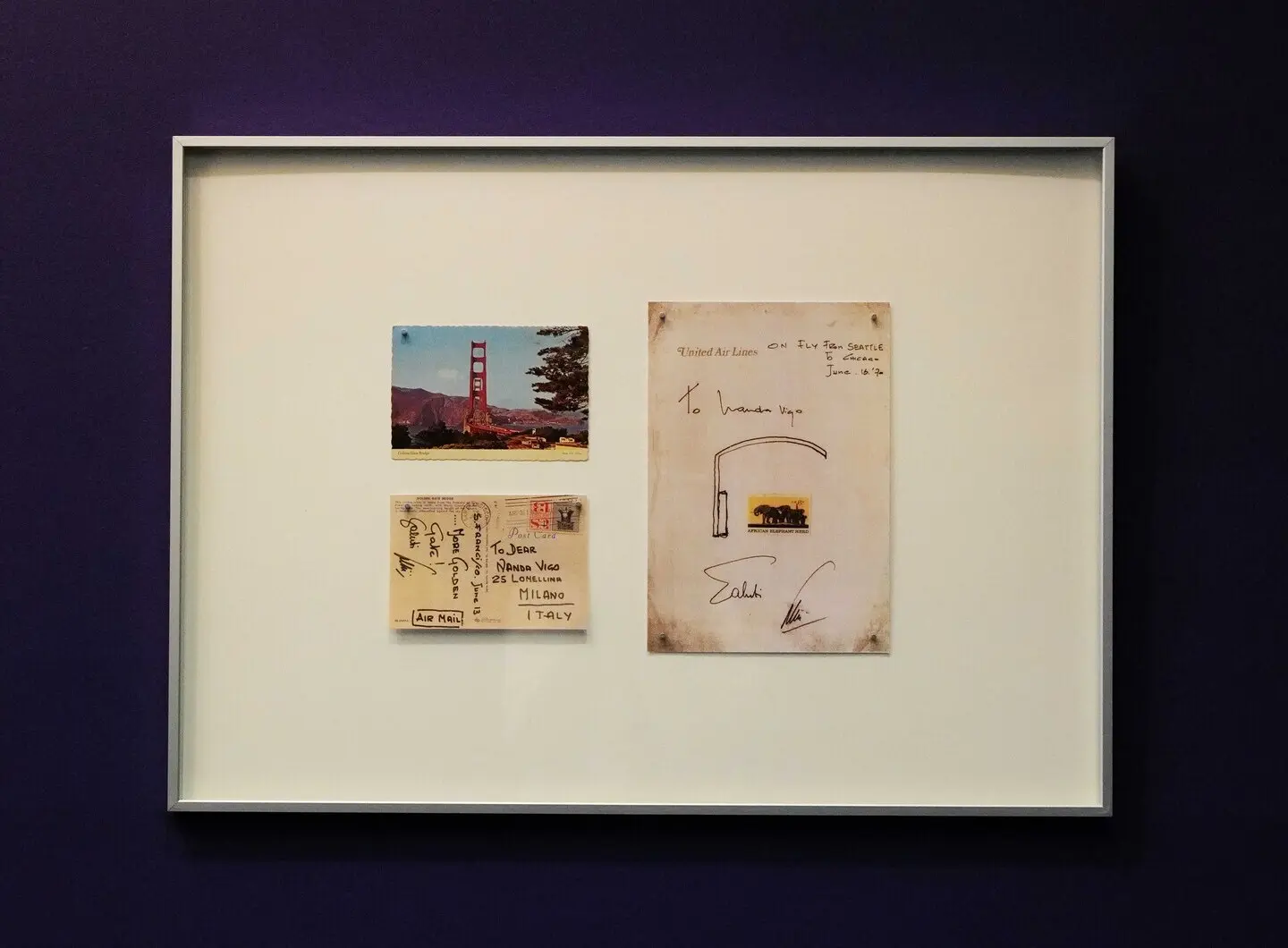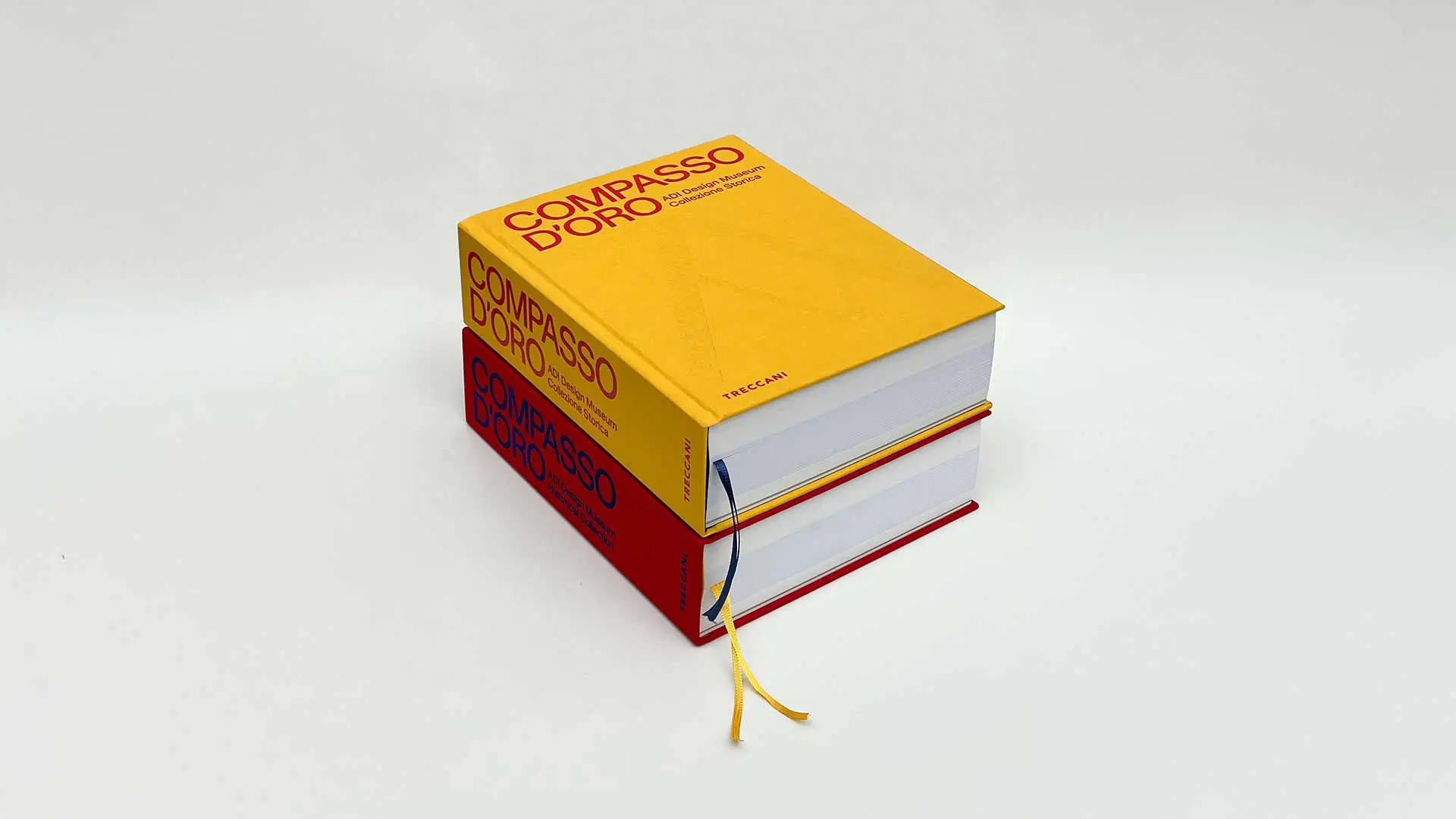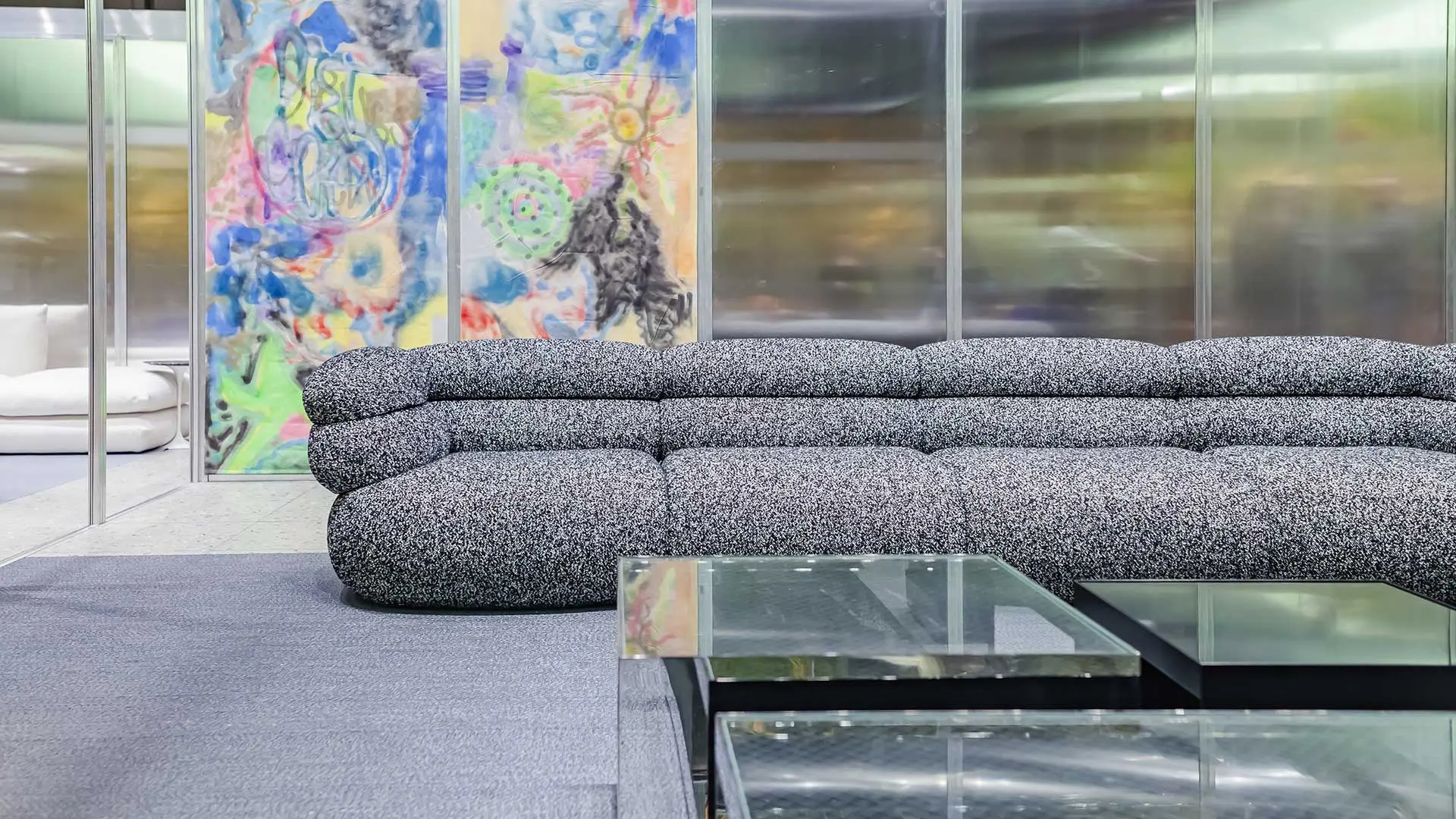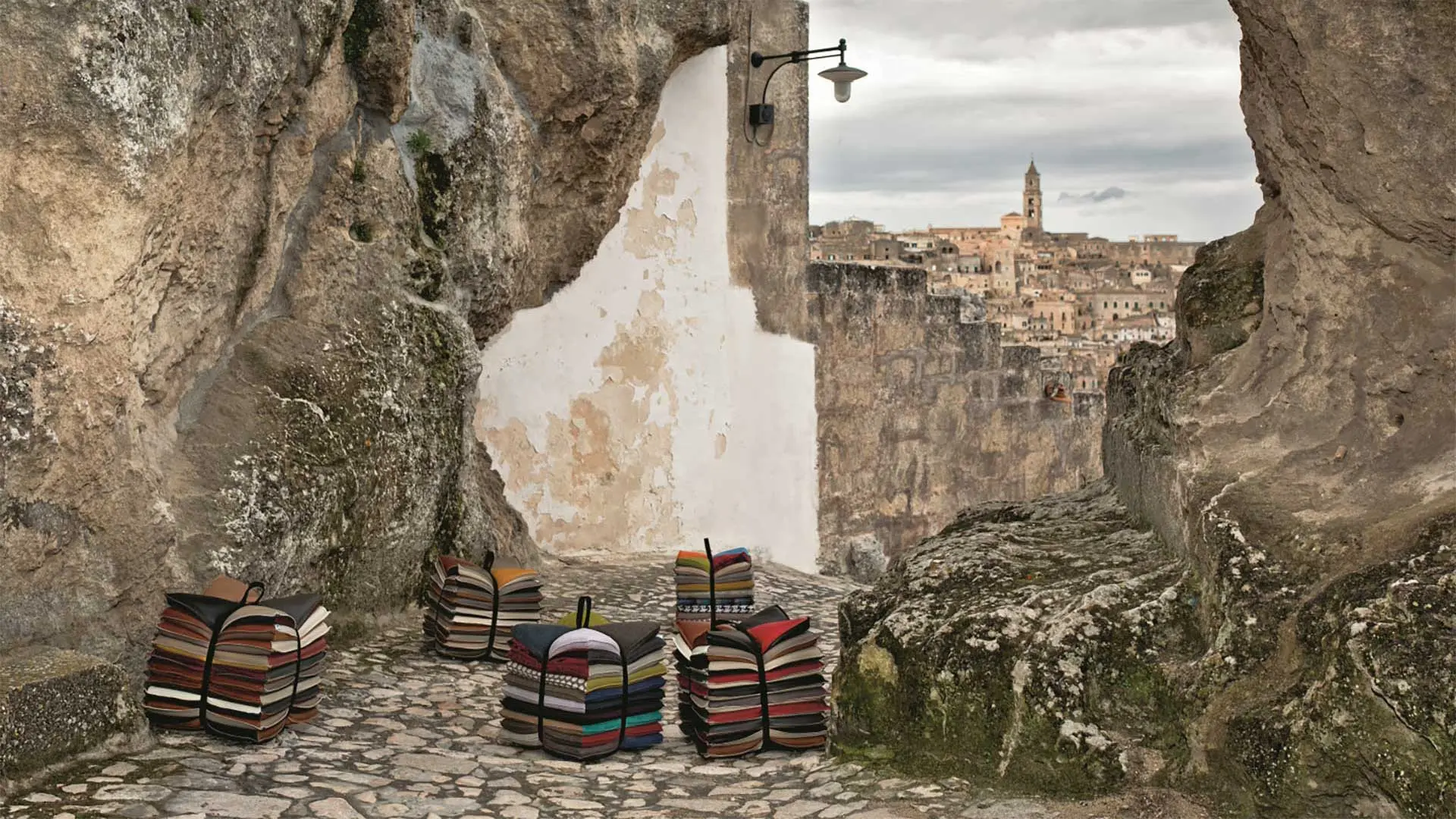Treccani’s latest book, edited by Beppe Finessi and presented at the ADI Design Museum, provides a comprehensive overview of the story of design told through the prestigious award
Nanda Vigo in Bordeaux: a retrospective that suspends time and space

Radical at “Nanda Vigo, l’espace intérieur” exhibition, MADD, Bordeaux. Photo Valérie Sadoun
An immersive retrospective dedicated to the Milanese designer at Madd in Bordeaux enables visitors to rediscover the scope of her creativity projected into the future, experiencing her world of neon, mirrors and spatial environments
“Identification: uncertain. Architect: reductive. Artist: reductive. Designer: reductive. Pioneer: maybe. Whatever: Nanda Vigo.” The introduction is Nanda Vigo’s (Milan 1936-2020), from a 2016 video interview. Now, Bordeaux’s Musée des Arts décoratifs et du Design pays tribute to her with a first major retrospective, after a Milan exhibition in 2019, raising awareness about a complex design career that evades labels and, especially, boundaries. This is the first opportunity for French audiences to get to know this highly influential Italian artistic avant-garde artist who emerged on the art scene in the 1960s but is far too little known today, even in Italy.
Driven by a creative urge projected into the future, Nanda Vigo was first and foremost a voracious experimenter. Curated by Justine Despretz and Victoire Brun, Nanda Vigo, l’éspace intérieur reconstructs her fluid way of working, her highly personal design vocabulary in which art, architecture and design harmoniously meld into a new concept of “total” environment.
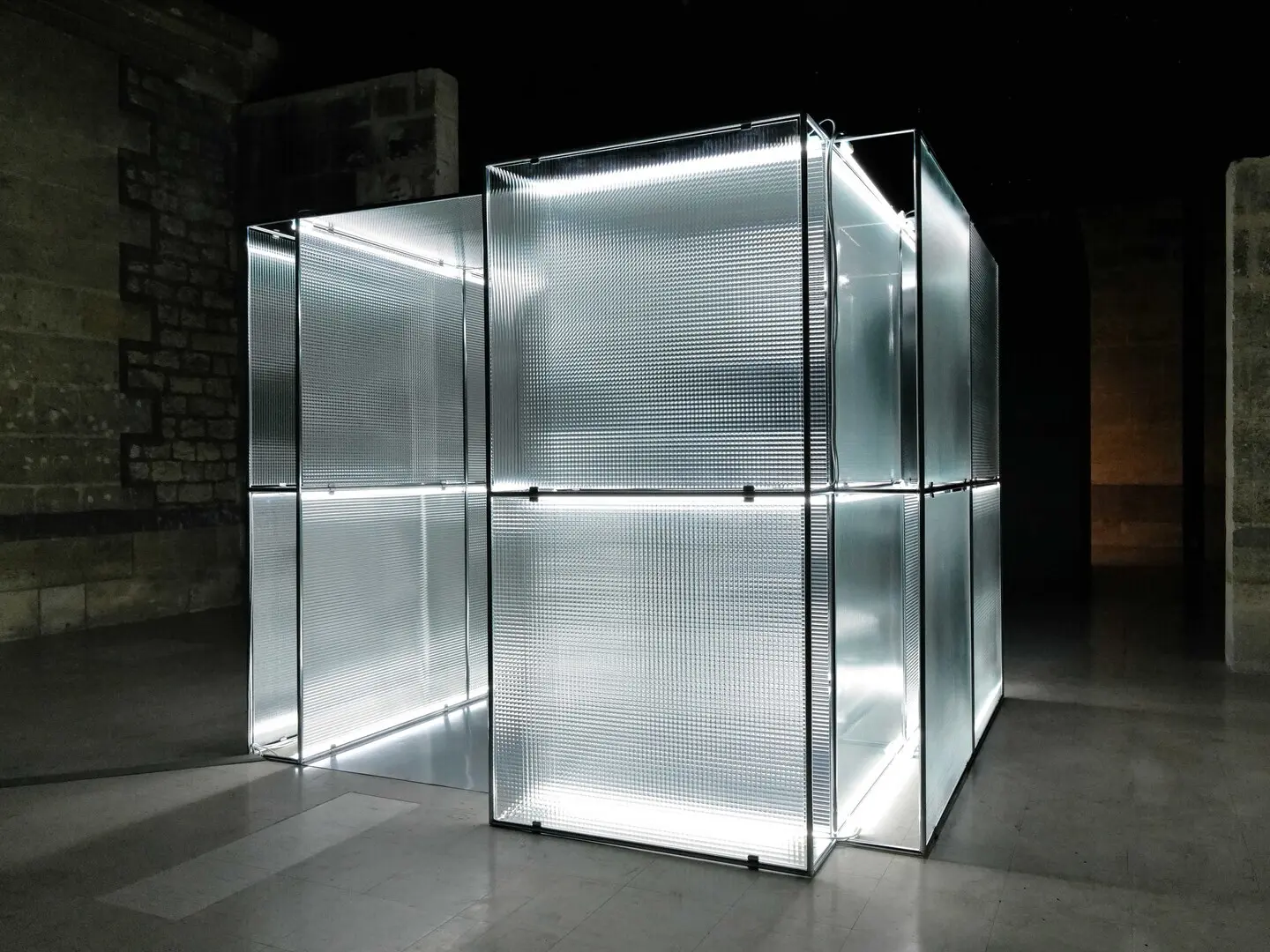
Nanda Vigo, Ambiente Cronotopico, 1968. Courtesy of Archivio Nanda Vigo, Milan, in collaboration with Glas Italia. Exhibition “Nanda Vigo, l’espace intérieur”, MADD, Bordeaux. Photo Valérie Sadoun
The immersive, thematic exhibition occupies the museum’s architecture. Located within a former city prison, the exhibition enables visitors to experience and live in the artist’s world of research. The long central corridor is a specially reconstructed Utopie, a sprawling red space environment with metal walls and carpeting, created in 1964 for the thirteenth Milan Triennale with Vigo’s friend and colleague Lucio Fontana. Reading Fontana’s White Manifesto in 1959 prompted her to start working with him, given their common interest in light, time and space. The former prison yards offer an approach to her early research, her “Cronotipi” and “Ambiente Cronotipico” sculptures made out of reflective materials, glass and steel, mounted on the walls or free-standing. Interacting with the light, they deconstruct spatial boundaries and transform our perceptions.
The old prison cells accommodate insights of various kinds: designs, monochrome interior designs, and her membership of ZERO, a Düsseldorf-based reactionary movement active between 1957 and 1966, which sought to redefine the concept of modernity and dispel the trauma of war. The group’s predilection for a plastic approach involving light and its dynamics aroused Vigo’s curiosity. Subsequently, she took part in the group’s exhibitions and performances, as may be seen from period photographs, magazines and archival materials.
Using QR codes on the walls, visitors can virtually enter one of Vigo’s most representative interiors, the home of art collector Giobatta Meneguzzo (1968) in Malo, near Vicenza. A true subversion of common design standards, the interior is a continuous, dreamlike, suspended white environment harmoniously integrating art, architecture and design. Gio Ponti, Vigo’s first, much-admired mentor, enthusiastically included her interior design in Domus, the magazine he published, focusing on its magnetic atmosphere with artworks by Fontana, Castellani, Bonalumi, and Le Parc complementing pure white, light-reflecting ceramic walls in dialogue with furry furnishings and a spiral staircase covered in synthetic fur.

Nanda Vigo, Trigger of the Space, 1974. Courtesy of private collection Milano & Archivio Nanda Vigo, Milan. Exhibition “Nanda Vigo, l’espace intérieur”, MADD, Bordeaux. Photo Valérie Sadoun
The “cell” dedicated to Vigo’s “Radical” design showcases her specific choice of materials: mirrors, glass, metal, plastic and textiles, which she translated into a provocative language of hybrid, furry, soft and welcoming forms, poised between a product and a work of art. Examples are the Blocco pouf in synthetic fur (1971) for Driade, the Blok table (1972), and the Andromeda (1974) and Cosmos (1981) mirrors for Glas Italia. For Acerbis, Nanda designed the rounded-profile Storet storage cabinet (1994), an object of audacious shapes and colours that, reflecting its timelessness, the company recently rereleased.
Her felicitous partnership with Angelo Lelli of Arredoluce, a courageous interlocutor who stimulated and produced this “radical” designer’s experiments, is told through steel lamps with stark shapes, such as Utopia, Iceberg, Linea (1969-1971) and Golden Gate, a two-metre-high floor lamp which was among the first to use LED technology in the very rare red colouring, at that time employed solely by NASA for its control panels at Apollo Mission Control.
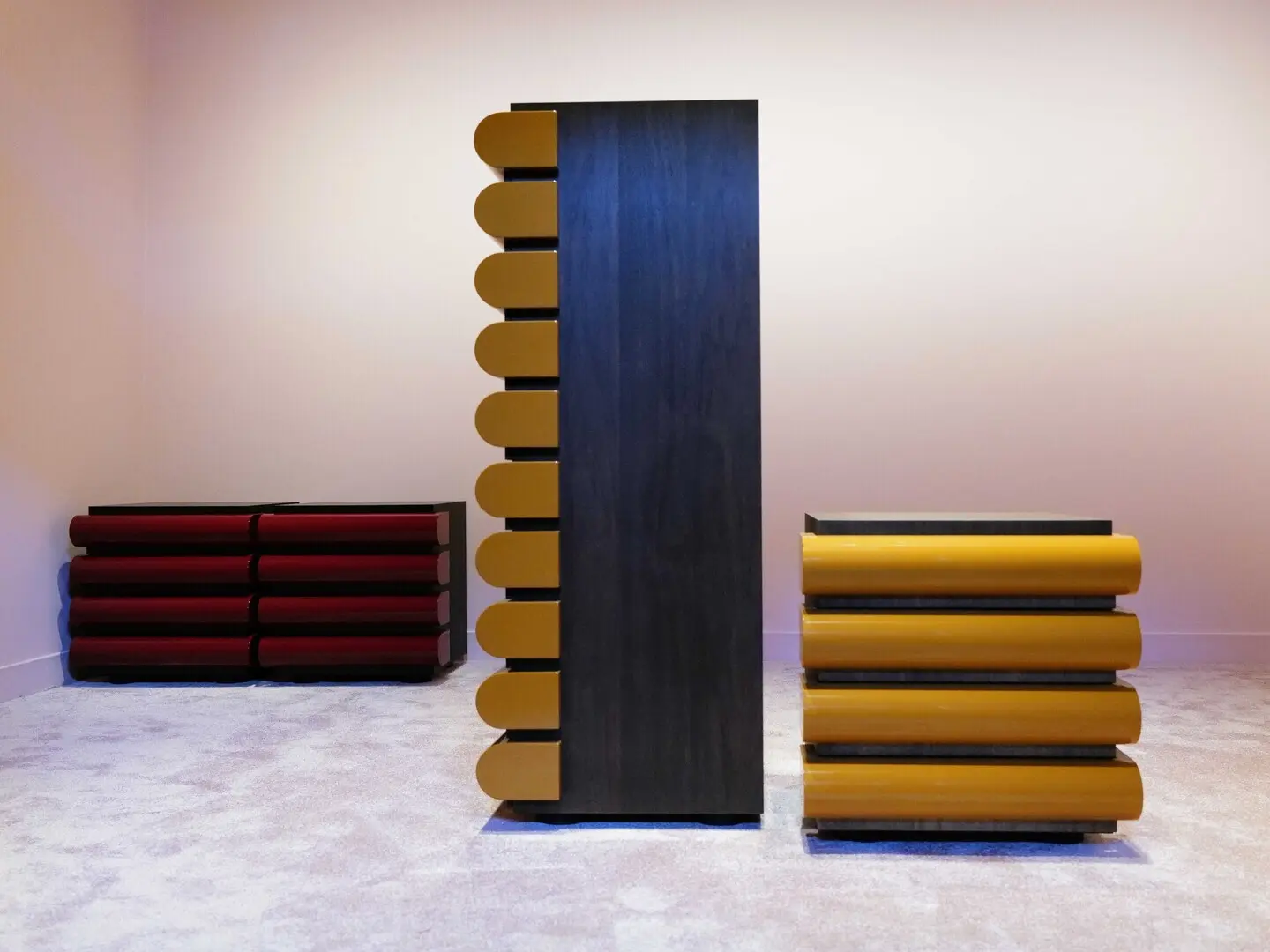
Nanda Vigo, Storet, 1992. Acerbis 1994-2001, 2020 reissue / Tables de nuit Storet, 1992. Acerbis 2020. Courtesy of Acerbis and MDF Italia srl. Exhibition “Nanda Vigo, l’espace intérieur”, MADD, Bordeaux. Photo Valérie Sadoun
In her late artistic output, Nanda Vigo’s works embraced a spiritual and anthropological dimension developed during her many trips to Africa, Asia and South America, adopting a symbolic language of pure volumes and forms – the triangle, the circle, cones – in her works Trigger of the space (1974), pyramidal sculptures of mirrors and neon conceived as stepping stones to new worlds, gateways for accessing the unknown universe.
As the curators write in the exhibition catalogue, Vigo’s works “are not contemplative objects, to be looked at head-on like a painting or a statue. They must be experienced internally, as spaces, be added into our sensory experiences.” They highlight the scope of the exhibition, which “two years after her death, is an important tribute because, despite her remarkable avant-garde career and working with Lucio Fontana, Giò Ponti, Piero Manzoni and Enrico Castellani [...], Nanda Vigo has yet to achieve the fame she deserves.”
Vigo was not wrong: it is most certainly “reductive” and pointless to try and circumscribe her activity; better to “cast light” on her work, to grasp its refractions on the future and continue along a path of understanding that, as she would have wished, still triggers sensory and emotional short-circuits.
Open until 8th January 2023
Nanda Vigo, l’espace intérieur,
Musée des Arts décoratifs, Bordeaux
Curated by Justine Despretz and Victoire Brun


